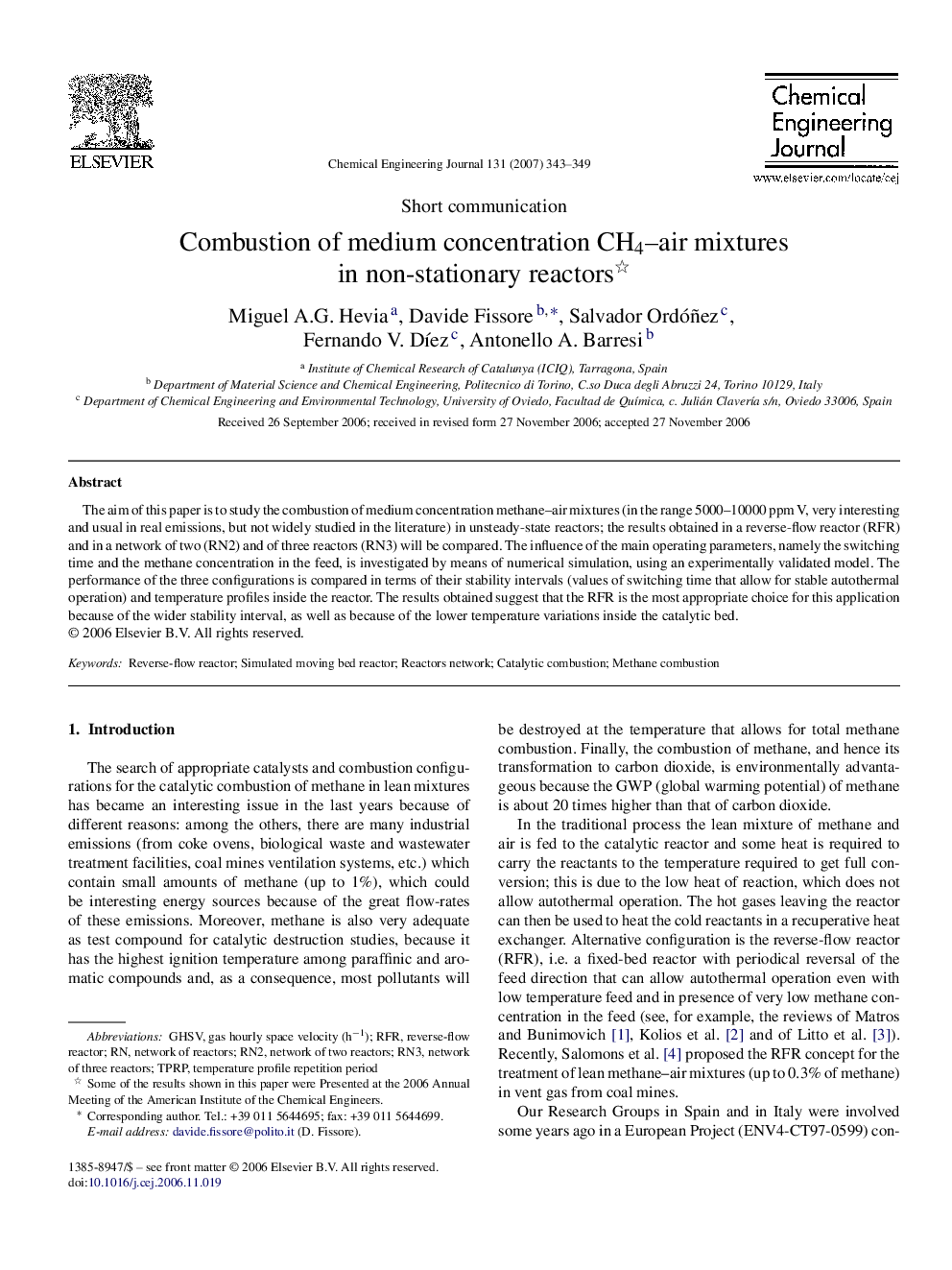| Article ID | Journal | Published Year | Pages | File Type |
|---|---|---|---|---|
| 153964 | Chemical Engineering Journal | 2007 | 7 Pages |
The aim of this paper is to study the combustion of medium concentration methane–air mixtures (in the range 5000–10000 ppm V, very interesting and usual in real emissions, but not widely studied in the literature) in unsteady-state reactors; the results obtained in a reverse-flow reactor (RFR) and in a network of two (RN2) and of three reactors (RN3) will be compared. The influence of the main operating parameters, namely the switching time and the methane concentration in the feed, is investigated by means of numerical simulation, using an experimentally validated model. The performance of the three configurations is compared in terms of their stability intervals (values of switching time that allow for stable autothermal operation) and temperature profiles inside the reactor. The results obtained suggest that the RFR is the most appropriate choice for this application because of the wider stability interval, as well as because of the lower temperature variations inside the catalytic bed.
